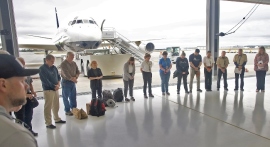
Every Good Friday, devotees in the Philippines hold Bloody Crucifixions as part of their tradition. However, a Catholic priest says that this practice reflects the church's inability to inform Filipinos properly about the fundamentals of Christian belief.
Bloody Crucifixions
A report from Yahoo News reported that in the time leading up to the crucifixions, worshipers hiked more than a half mile up a hill while carrying large crosses on their backs. Other individuals, numbering in the hundreds, likewise wandered around barefoot and flogged themselves with poles made of sharp bamboo.
Later on, villagers dressed up as Roman centurions drove stainless steel nails measuring four inches in length through the palms and feet of the eight men. They were then exposed to the sun on the cross for around ten minutes while they remained there.
As mentioned, after a three-year hiatus brought on by the coronavirus pandemic, the crucifixions that occur in the farming community of San Pedro Cutud in Pampanga province, which is located north of Manila, have started up again. About a dozen locals signed up, but only eight men took part in the event. One of those participants was a sign painter named Ruben Enaje, who was 62 years old and was nailed to a wooden cross for the 34th time in San Pedro Cutud.
Enaje said he prayed to eliminate the COVID-19 virus and end Russia's invasion of Ukraine. The invasion of Ukraine by Russia has led to the skyrocketing prices of gas and food worldwide. Enaje reportedly underwent the ordeal in gratitude for surviving a 1985 three-story building fall. After loved ones recovered, he considered it a miracle and became a village celebrity as the "Christ" in the Lenten Way of the Cross reenactment.
This year, event organizers reported that more than 15,000 people from the Philippines and other countries visited Cutud and two different towns. Moreover, a British tour organizer named Johnson Gareth brought 15 tourists from eight nations to view the crucifixions.
Gareth mentioned that one of the reasons they enjoy this is that there is nothing else on earth quite like it. It's not nearly as gruesome as many seem to believe it is. They anticipate that it will be extremely horrible or revolting, but it is neither of those things. It is carried out respectfully.
"I respect it, I'm very open-minded," a tourist from the Czech Republic, Milan Dostal, noted. However, religious authorities in the country have voiced their opposition to the crucifixions in the past, pointing out that adherents can demonstrate their faith by engaging in charity work instead.
Hawaii Tribune-Herald reported that a famous Catholic priest and human rights activist in the nation, Robert Reyes, stated that the bloody rites represent the church's inability to completely teach many Filipinos Christian tenets, leaving individuals on their own to discover personal means of seeking divine help for a wide variety of ailments.
Also Read:Catholic Church Practices on Abstinence and Fasting During Holy Week
Importance of Crucifixion on Devotees
According to the BBC, most Christian denominations teach that the crucifixion of Jesus took place in the exact manner portrayed in the Bible. Crucifixion is significant to Christians because they believe that God gave up Jesus, his only son, as a sacrifice to make one for the sins of humanity. Accordingly, crucifixion holds no importance for Christians adhering to the Unitarian and Quaker traditions who reject the notion that Jesus was the divinely begotten son of God. Moreover, the Eucharist, which is a celebration of the crucifixion of Jesus, is not a component of the worship that these Christians practice.
Related Article: Pope Francis Says Jesus Christ's Crucifixion 'Embraced Every Man's Death, Pain, Weakness'

















